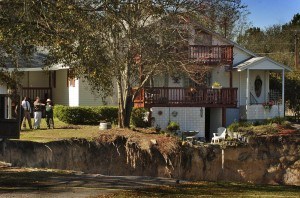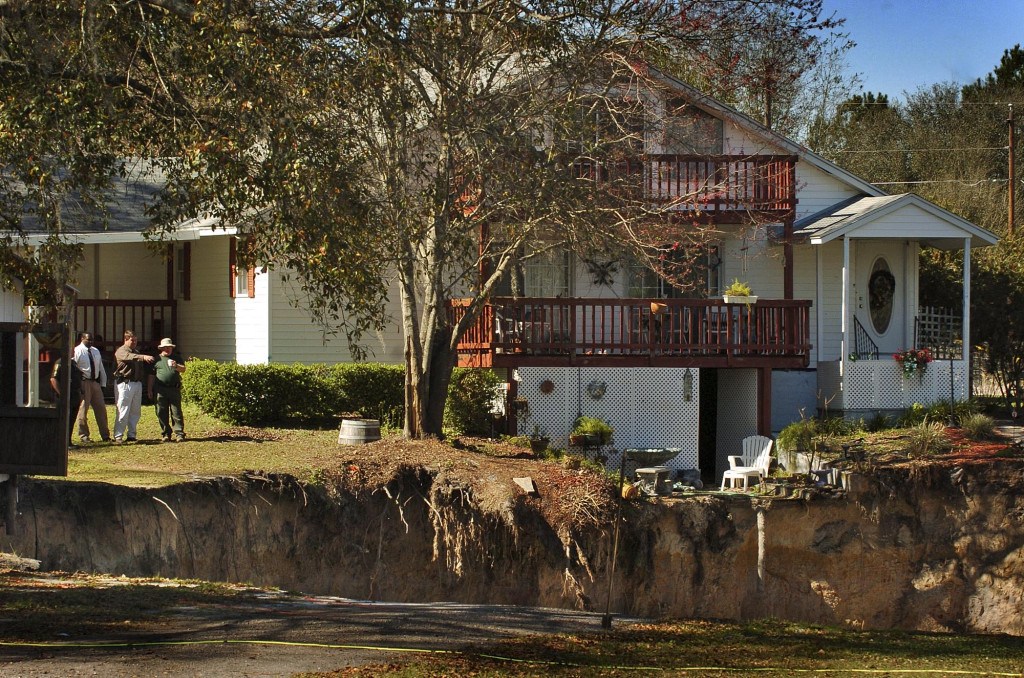An ongoing debate in sinkhole claims and litigation is whether the legislature intended for Florida insurers to provide coverage for sinkhole activity that causes aesthetic damage only.
 In 2005, the legislature enacted Section 627.706, requiring that insurers provide coverage for “structural damage” caused by sinkhole activity. The legislature, however, failed to define “structural damage.” Naturally, some insurers and insureds differed on their interpretation. In 2011, the legislature provided a definition, as described in more detail below. Since then, the majority of courts held that “structural damage” means “damage to the structure;” however, two recent federal opinions differ.
In 2005, the legislature enacted Section 627.706, requiring that insurers provide coverage for “structural damage” caused by sinkhole activity. The legislature, however, failed to define “structural damage.” Naturally, some insurers and insureds differed on their interpretation. In 2011, the legislature provided a definition, as described in more detail below. Since then, the majority of courts held that “structural damage” means “damage to the structure;” however, two recent federal opinions differ.
In September 2013, in the cases of Erasmo and Maria Gonzalez v. Liberty Mutual and Robert and Patricia Bonitch v. Liberty Mutual, two Middle District of Florida judges held that “structural damage” does not mean “damage to the structure.” Although the judges provided slightly different meanings for “structural damage,” each opinion is properly characterized as requiring that sinkhole activity cause damage that impairs the ability of the property to be structurally sound.
A closer look at the orders shows a slight variation in how the Gonzalez and Bonitch courts defined “structural damage.” Despite this variation, it is worth noting that both definitions require the insured to show that sinkhole activity has compromised the home’s structural integrity:
Gonzalez: “Damage to a part, material, or assembly of the building that affects the stability of the building or that supports a dead or designed live load, and the removal of which part, material, or assembly could be expected to cause a portion of the building to collapse or fail.”
Bonitch: “Damage that impairs the structural integrity of the building.”
As a result of these orders, insurers and insureds may consider consulting with their engineering experts to assess the potential effect on the coverage permitted for their claims. Engineers will need to examine all of the damage – floor movement; cracking to floors, walls, and ceilings; and separation of materials. Experts will likely shift some of their focus from the subsurface soil conditions to the building, and thus engineers should be armed with calculations and explanations for why the damage fits the definition of “structural damage.”
The impact of these cases is highly debatable. Although a complete review of the legislative history and case law is outside the scope of this article, it is important to note the following. Most insurers did not have a definition of “structural damage” in their policies because the legislature did not provide one until 2011. The 2011 definition of “structural damage” is a highly technical, five prong approach to evaluating whether the property’s load bearing capacity has been compromised and whether the property is in danger of collapsing. Following the announcement of the 2011 statutory definition for “structural damage,” many insurers amended their sinkhole loss coverage to incorporate the definition. Accordingly, the Gonzalez and Bonitch orders appear to reflect an analysis of policies from the 2006 to 2011 timeframe that did not contain a definition for “structural damage.” At this time, the majority of the pending lawsuits arise from policies written during 2006 to 2011, and therefore, the Gonzalez and Bonitch orders are relevant to much of the current litigation. Nevertheless, if there is a new claim and the relevant policy has been amended to incorporate the 2011 definition of “structural damage,” then these cases are immaterial. Further, please also note that the Gonzalez and Bonitch orders are from federal district courts and are not yet binding precedent. With this context, it should be easier to understand the overall impact of the orders, and to be aware of the potential shift in how courts might present these claims to a jury.
Was this article valuable?
Here are more articles you may enjoy.



 CoreLogic Report Probes Evolving Severe Convective Storm Risk Landscape
CoreLogic Report Probes Evolving Severe Convective Storm Risk Landscape  Johnson Controls Unit to Pay $750M to Settle ‘Forever Chemicals’ Lawsuit
Johnson Controls Unit to Pay $750M to Settle ‘Forever Chemicals’ Lawsuit  Property Restoration Industry: A Culture in Need of Repair?
Property Restoration Industry: A Culture in Need of Repair?  Report: Vehicle Complexity, Labor ‘Reshaping’ Auto Insurance and Collision Repair
Report: Vehicle Complexity, Labor ‘Reshaping’ Auto Insurance and Collision Repair 